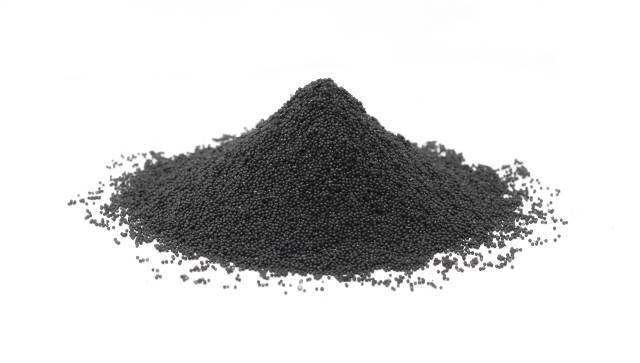The discussion of the trillion dollar market for nanotechnologies has generated quite a bit of interest and discussion. Anyone who remembers nanotechnology a decade ago will notice that graphene is going through a similar period of hype.
On an almost daily basis there is a new application proposed, such as curing cancer or generating fuel from fresh air, which keeps interest bubbling. I recently looked at one application, ITO replacement, and I’ll take a critical look at some of the other applications in the future, but for now let’s take a look at the market numbers.

The one thing missing from all the discussion of graphene is any inflated market numbers. In fact, compared to the frenzied overhyping of nanotechnologies, the estimates for graphene markets tend to be conservative in the extreme.
A rash of recent market estimates towards the end of last year put the international market for graphene in the range of a few hundred million dollars. That’s pretty much the same amount as has been raised by or invested in graphene producers around the world, and investing $150 million to unlock a market worth $150 million doesn't seem to make very much sense to me. So are graphene producers completely wrong, or are the market estimates wildly inaccurate?
Confusingly, it appears that everybody is right. It just happens that we are talking about different kinds of graphene at different points in the value chain.
Unpicking the Graphene Market Numbers
Let’s take a look at the market research first. There is an old adage that the only thing about a business plan that anyone can be certain of is that it will be proven to be wrong, and the same applies to market research, especially when valuing companies in emerging sectors.
Making predictions about the growth of an established sector, for example a speciality chemical, is relatively simple. There is plenty of historical data about sales, markets and applications, so a baseline already exists. But when analyzing the markets for emerging technologies, almost everyone you can speak to is a start-up, and most will have taken a leap of faith based on the assumption that a market will exist at some point in the future, given a combination of decent technology and a good enough team to exploit it – even if this market cannot be definitively identified at present.
It's that lack of verifiable data that sometimes tempts people to make over-optimistic predictions, while some of the others can be more conservative, based on both conversations with materials producers and comparisons with similar materials, for example carbon nanotubes.
I spoke to Dr Khasha Ghaffarzadeh of IDTechEx Consulting to get his views on the numbers. IDTechEx have predicted that graphene markets will grow from around $20 million in 2014 to more than $390 million in 2024 at the material level, and were recently forecasting $180m by 2018.
There’s More to Graphene than Black Powder
It is worth pointing out that the IDTechX forecasts are based solely at the material level, i.e. the amount of pure graphene that will be sold. Dr Ghaffarzdeh also commented that market penetration of graphene may take longer than some people expect because it is essentially a substitution material in a lot of applications, so the price points and performance levels need to be significantly better to encourage manufacturers to change their processes to adopt graphene.
Some companies I have been advising have already placed orders from producers, but I can't think of a single one that actually wanted to buy pure graphene. Some have bought pure graphene to play with themselves, but in reality industry wants to buy inks, dispersions and master batches, rather than have the hassle of taking a bag of black powder and adapting it for applications which may be rather ill-defined at this point. Providing those ready-to-use products is what will unlock the market for graphene.

Glad Tidings for Graphene Producers
This turns out to be rather good news for graphene producers, because in general an ink containing perhaps a 20% loading of graphene nano platelets (GNPs) can represent a 5000% markup over the cost of the raw material. A rather simplistic extrapolation from this suggests a $1 billion graphene intermediates market within five years.
And it gets better. Some of the GNPs show good potential as a carbon black substitute – a 2% loading of GNP could perform at least as well as a 20% loading of carbon black. Even if the GNP price is 7-8 times higher than carbon black, there is still a significant margin for the end user to play with.
Woohoo! Now that's something I can probably talk to investors about without being shown the door after my second PowerPoint slide. And when the inevitable comment, “you predict a market of a billion while these guys say 100 million,” comes up, I’ll have a snappy comeback.
If we start looking at the market for specific applications, then the numbers can perhaps be a little easier to access. For example, the lithium ion battery market is well covered by a number of market research firms, and figures are readily available for both the overall market and for the various components and materials that go to make up a battery.
This type of application is where producers and analysts may disagree. Quite often it is not simply a case of substituting one material for another, for example replacing graphite with graphene nano platelets, but one where the properties of graphene can enable battery producers to take a new look at the entire structure, and create an innovative product rather than an evolution of the preceding one.
And then there are all the products inspired by graphene that nobody has thought of yet. While we might think that we're pretty good at predicting technology, most predictions are simply extrapolations from things we already know about. Did anybody predict the smartphone, tablet computer, online social networks, or instant messaging, things so blindingly obvious that it's amazing they were not developed sooner?
Known Unknowns vs. Unknown Unknowns
So the market numbers are, to paraphrase Donald Rumsfeld, focusing on the “known unknowns” – it is possible that the “unknown unknowns” turn out to be an order of magnitude larger. So putting numbers on the market for graphene is saying, “Here is what we can be certain of based on what we know today, and let's take this as a baseline. However, there are a whole bunch of things that we don't know about, and can't yet imagine, that might make the market 100 times bigger, and a whole bunch of technical hurdles that may make getting into that market 100 times slower.”
The problem with making predictions is that you can never be correct, and everyone will claim to have a better understanding of the numbers than you. But if we believe the prediction of a $390 million dollars for graphene within 10 years, and then factor in the “unknown unknowns”, we arrive at a number between a few hundred million and a few billion dollars. And as an entrepreneur, I’d guess that there’s probably a few applications in there worth taking a run at.
 |
Tim Harper
Tim is a serial technology entrepreneur focussing on nanotechnology and graphene.
A former engineer at the European Space Agency, his business background ranges from venture capital to running public companies to advising governments and international organisations.
|
Disclaimer: The views expressed here are those of the author expressed in their private capacity and do not necessarily represent the views of AZoM.com Limited T/A AZoNetwork the owner and operator of this website. This disclaimer forms part of the Terms and conditions of use of this website.